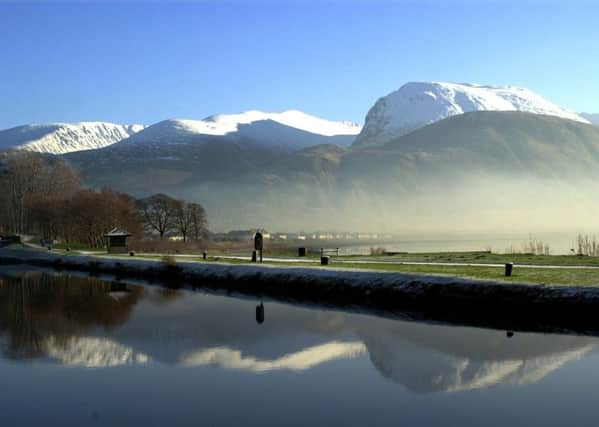Seven numbers you should know this week


£3.9million to help Scots flood victims
The Scottish Government will be given almost £4 million to help households and businesses affected by last weekend’s flooding, it has been announced.
It is part of a £50m UK-wide fund announced by Chancellor George Osborne for those affected by the recent weather.
Advertisement
Hide AdCommunities in the Borders, Dumfries and Galloway, Tayside and Moray were among those hardest hit by Storm Desmond.
Scottish Secretary David Mundell confirmed Scotland would receive £3.94m, under the terms of the Barnett Formula.
About 600 people were evacuated from their homes in Hawick as the River Teviot burst its banks on Saturday, with Peebles, Selkirk, Coldstream, Jedburgh and Kelso also hit.
33 per cent of councils have cut teacher numbers
Nationalist ministers have been accused of “badly letting down our schools” after new figures showed the number of teachers working in Scotland’s schools has fallen for the ninth year in a row.
Opposition parties made the claim came as it emerged that almost a third of Scotland’s councils have cut teacher numbers despite making a deal with the Scottish Government not to do so.
Local authorities had pledged to maintain the number of teaching staff as part of a funding deal with ministers but new figures from the government showed ten out of the 32 had reduced numbers.
Advertisement
Hide AdIn Scotland’s largest local authority, Glasgow City Council, the number of teachers fell by 45 to 4,838 while North Lanarkshire had the largest drop (58) to a workforce of 3,465.
Five tallest Munros in Scotland
A munro, as any hillwalker will tell you, is a Scottish mountain with a height of more than 3000ft.
Advertisement
Hide AdThe name comes from Sir Hugh Munro, a well-known Victorian mountaineer who published a list of the nation’s tallest peaks, Munros Table, in 1891.
The number of mountains with a height of more than 3000ft was previously a subject of great debate among climbers, with estimates ranging from the low 30s to more than 230.
A 2012 revision by the Scottish Mountaineering Club found there are 282 Munros, and a further 227 further subsidiary tops - summit that is not regarded as a separate mountain and which is over 3,000 feet.
Ben Nevis
The tallest peak in the British Isles and the most famous Munro of them all. Ben Nevis is an Anglicisation of the Gaelic Beinn, meaning mountain, and Nibheis, which is variously translated as either malicious or venomous. An estimated 100,000 people ascend the mountain each year, mainly in the summer months. The cliffs of its north face provide rock climbing challenges for mountaineers of all abilities. An observatory at its summit was manned continuously from 1883 and 1904 before being abandoned. It has recently become a venue for extreme skiing.
620,000 people commute to work every day
Figures show that 92,000 people travel into Edinburgh to work, with more than a third (35 per cent) of its workforce living outwith the city limits. Edinburgh’s total workplace population is around 260,300.
Driving is still the most common way to commute, with around 42 per cent of workers choosing to travel this way.
Advertisement
Hide AdFurther analysis of the 2011 census shows that just over 27 per cent of commuters travel by bus and 7 per cent take the train.
1,000 offences committed in Scotland’s most dangerous prison
Advertisement
Hide AdNew figures show that police officers are being called in to investigate a crime at the prison in Edinburgh almost every day.
Saughton Prison is Scotland’s most crime-ridden jail with more than 1,000 offences committed there in just three years.
Glasgow’s Barlinnie prison had the second highest crime rate with 367 offences since the start of 2013.
The crimes taking place behind bars range from drug smuggling and dealing and assaults to robbery and knife carrying.
A total of 3,646 prison-based crimes have been reported to police over the last three years with nearly 750 of them going unsolved.
100 best Scottish buildings of last century revealed
The list, which includes buildings from 1916 until the present day, includes two Glasgow banks, the Bon Accord Baths in Aberdeen, Tongland Power Station in Kirkcudbright and several provincial churches.
Advertisement
Hide AdThe public vote forms part of the Festival of Architecture, which takes place from March to October.
A new exhibition, Scotstyle, will tour the country and tell the story of the 100 buildings.
Advertisement
Hide Ad25 per cent of Scots feel pressure at Christmas to overspend
More people are borrowing to pay for festive food and gifts than last year.
Nearly one in four Scots feels under pressure to overspend this Christmas, with shopping bonanzas such as Black Friday and children’s wishes being among the main causes, a charity has found.
With underlying borrowing having risen sharply over the last year, we are concerned that this extra Christmas spending will be the last straw for many.
Joanna Elson, Chief Executive, Money Advice Trust
Research for the Money Advice Trust’s National Debtline found that 23 per cent of adults feel under pressure to spend more than they had planned this festive season.
Across the survey of more than 2,000 people, 7 per cent of people said their children are a source of pressure to spend more than they had intended.